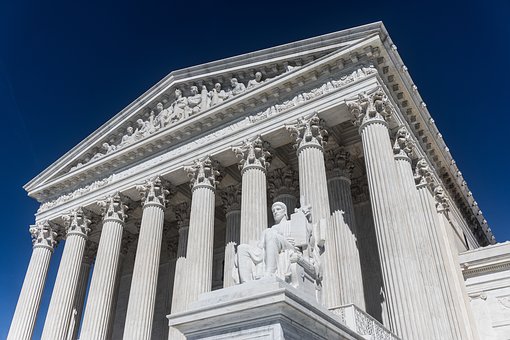Since the earliest days following the D.C. Circuit’s decision to uphold the FCC’s 2015 Net neutrality rules, seven separate court cases have been appealed to the Supreme Court. Last Monday, Nov. 5, the court, by a 4-3 majority (more on that in a few paragraphs), decided NOT to hear any of those appeals on the rules invalidated by the Republican-controlled FCC. This doesn’t mean that there won’t be more attempts in the future, but for now, all’s quiet on the Supreme Court front.
As has been presented in this space many times, the 2015 regulations, put in place during the Obama Administration, prevented broadband providers from blocking websites, throttling traffic, or charging for higher-quality service or content. Most importantly, particularly to the underserved, these regulations, which were validated by the D.C. Circuit in 2016, allowed the federal government to regulate high-speed Internet delivery like a utility by regulating it as a telecommunications service and not an information service. In the deregulated environment championed by the current administration and its appointees, the FCC has abandoned these rules in favor of a market-based regulatory approach that has allowed Internet service providers (ISPs) to charge more, provide less, and be less than forthright (and I’m being kind) about the performance of their specific service offerings and the reliability and costs of those offerings. The Net neutrality regulations offered consumers some protections and assurances that their individual and collective Internet access would not be throttled, blocked, or prioritized in the name of increased ISP income.
In late 2017, to the disgust/disappointment of most Americans, the FCC issued its poorly named “Restoring Internet Freedom Order,” which essentially invalidated Net neutrality as it had existed since 2015. Why, since the rules had been abandoned, should the 2016 decision that confirmed those rules be considered at the Supreme Court?
The reason is this: because it’s very, very likely that with a Democratic majority in the House come January 2019 and the popularity of Net neutrality guarantees of equity, that the Obama-era rules may be restored in one way or another. If the Supreme Court had opted to consider the 2016 rules jettisoned last year, particularly with its conservative majority, the position of those who support Net neutrality would likely have been weakened as the light regulatory hand that the 2017 rules imposed would have had the tacit blessing of the court. This would not have been an impossible burden to overcome, but a Supreme Court decision overruling the D.C. Circuit in this matter would have created a very high barrier.
However, this session, when the Supreme Court justices considered weighing in on the Net neutrality 2015 Obama-era rules, two of its conservative justices recused themselves because of prior history with the case at lower courts. As such, with only seven justices able to vote on hearing the case, the remaining majority (Stephen Breyer, Ruth Bader Ginsburg, Sonia Sotomayor, and Elena Kagan) voted against doing so, thus effectively supporting the Net neutrality rules. Essentially what this means is that the 2015 Net neutrality rules remain good law, despite the fact that they are currently (this being a keyword) moot due to the current administrative agency’s decision making.
Further, since the 2018 rules are currently under legal challenges of their own, the D.C. Circuit’s 2016 decision and validation of the 2015 rules creates lasting legal precedent. This could be extremely helpful in re-establishing true, enforceable provisions of Net neutrality, which a majority of Americans (both Republicans and Democrats) support, as shown in public opinion polling.
As a final note, while this may not be the first issue that the new Congress takes up in January, I expect that it will be part of the House agenda in the early part of the year. Hope springs eternal.










